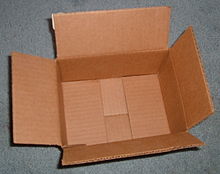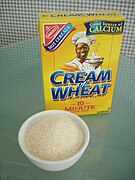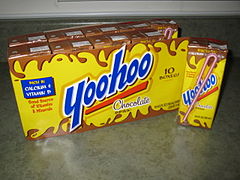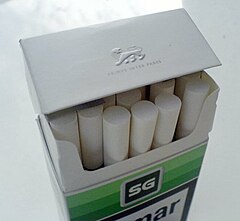How Do You Know Where Cardboard Is From

Cardboard boxes are industrially prefabricated boxes, primarily used for packaging goods and materials and tin also be recycled. Specialists in industry seldom utilise the term paper-thin because it does non announce a specific material.[i] [ii]
The term cardboard may refer to a diversity of heavy paper-similar materials, including, RS 4 Box, corrugated fiberboard,[3] or paperboard.[4] The meaning of the term may depend on the locale, contents, construction, and personal choice.
Terminology [edit]
Several types of containers are sometimes called paper-thin box:
-

-
-
Corrugated box used for storage of archives
-

-

Milk in gable-superlative carton
-

Set-up box made of non-bending paperboard
In concern and industry, fabric producers, container manufacturers,[five] packaging engineers,[half dozen] and standards organizations,[7] attempt to use more specific terminology. There is however not consummate and uniform usage. Often the term "cardboard" is avoided because it does not define any particular material.
Broad divisions of paper-based packaging materials are:
- Paper is thin material mainly used for writing upon, press upon, or for packaging. It is produced by pressing together moist fibers, typically cellulose pulp derived from wood, rags, or grasses, and drying them into flexible sheets.
- Paperboard, sometimes known as paper-thin, is generally thicker (normally over 0.25 mm or 10 points) than newspaper. According to ISO standards, paperboard is a paper with a basis weight (grammage) above 224 g/mtwo, simply there are exceptions. Paperboard can be single- or multi-ply.
- Corrugated fiberboard sometimes known equally corrugated board or corrugated cardboard, is a combined paper-based material consisting of a fluted corrugated medium and ane or two flat liner boards.
There are also multiple names for containers:
- A aircraft container made of corrugated fiberboard is sometimes chosen a "cardboard box", a "carton", or a "case". There are many options for corrugated box design.
- A folding carton made of paperboard is sometimes called a "cardboard box".
- A set-upward box is fabricated of a non-bending class of paperboard and is sometimes called a "cardboard box".
- Drink boxes made of paperboard laminates, are sometimes called "cardboard boxes", "cartons", or "boxes".
History [edit]
The first commercial paperboard (not corrugated) box is sometimes credited to the house M. Treverton & Son[8] in England in 1817.[9] [10] [eleven] Cardboard box packaging was made the aforementioned year in Germany.[12]
The Scottish-born Robert Gair invented the pre-cut paper-thin or paperboard box in 1890 – apartment pieces manufactured in bulk that folded into boxes. Gair's invention came almost as a consequence of an blow: he was a Brooklyn printer and newspaper-bag maker during the 1870s, and one day, while he was press an society of seed numberless, a metallic ruler normally used to pucker bags shifted in position and cut them. Gair discovered that by cutting and creasing in one operation he could make prefabricated paperboard boxes. Applying this idea to corrugated boxboard was a straightforward development when the material became available around the turn of the twentieth century.[xiii]
Cardboard boxes were developed in France about 1840 for transporting the Bombyx mori moth and its eggs past silk manufacturers, and for more than a century the industry of cardboard boxes was a major industry in the Valréas expanse.[xiv] [15]
The appearance of lightweight flaked cereals increased the use of cardboard boxes. The start to apply cardboard boxes as cereal cartons was the Kellogg Company.
Corrugated (also called pleated) paper was patented in England in 1856, and used equally a liner for tall hats, simply corrugated boxboard was not patented and used every bit a shipping material until 20 December 1871. The patent was issued to Albert Jones of New York City for single-sided (unmarried-face) corrugated lath.[sixteen] Jones used the corrugated lath for wrapping bottles and drinking glass lantern chimneys. The offset automobile for producing big quantities of corrugated board was congenital in 1874 by One thousand. Smyth, and in the same year Oliver Long improved upon Jones'due south design by inventing corrugated board with liner sheets on both sides.[17] This was corrugated cardboard every bit we know it today.
The beginning corrugated cardboard box manufactured in the US was in 1895.[18] By the early 1900s, wooden crates and boxes were being replaced by corrugated paper shipping cartons.
By 1908, the terms "corrugated newspaper-board" and "corrugated paper-thin" were both in employ in the paper merchandise.[19]
Crafts and entertainment [edit]
Cardboard and other paper-based materials (paperboard, corrugated fiberboard, etc.) tin accept a post-primary life as a cheap material for the structure of a range of projects, among them existence science experiments, children'due south toys, costumes, or insulative lining. Some children savor playing within boxes.
A common platitude is that, if presented with a big and expensive new toy, a kid volition quickly get bored with the toy and play with the box instead. Although this is usually said somewhat jokingly, children certainly enjoy playing with boxes, using their imagination to portray the box as an infinite diverseness of objects. One instance of this in pop culture is from the comic strip Calvin and Hobbes, whose protagonist, Calvin, often imagined a cardboard box as a "transmogrifier", a "duplicator", or a time machine.
Then prevalent is the cardboard box'south reputation as a plaything that in 2005 a cardboard box was added to the National Toy Hall of Fame in the The states,[twenty] one of very few non-brand-specific toys to be honoured with inclusion. Equally a issue, a toy "house" (actually a log cabin) made from a big cardboard box was added to the Hall, housed at the Strong National Museum of Play in Rochester, New York.
The Metallic Gear serial of stealth video games has a running gag involving a cardboard box every bit an in-game item, which tin can exist used past the player to try to sneak through places without getting caught by enemy sentries.
Housing and furniture [edit]
Living in a cardboard box is stereotypically associated with homelessness.[21] All the same, in 2005, Melbourne architect Peter Ryan designed a house equanimous largely of cardboard.[22] More mutual are small seatings or petty tables fabricated from corrugated paper-thin. Merchandise displays fabricated of cardboard are often found in self-service shops.
Cushioning by crushing [edit]
Mass and viscosity of the enclosed air help together with the limited stiffness of boxes to absorb the energy of oncoming objects. In 2012, British stuntman Gary Connery safely landed via wingsuit without deploying his parachute, landing on a 3.six-metre (12 ft) high crushable "runway" (landing zone) built with thousands of cardboard boxes.[23]
See also [edit]
- Banana box, a type of paper-thin box designed for transportation of bananas
- Corrugated fiberboard
- Eurocontainer, a system for boxes that can be used for reusable packaging for transport and storage
- The Chance of the Cardboard Box (a Sherlock Holmes story)
References [edit]
- ^ Soroka, W (2008). Illustrated Glossary of Packaging Terms. Establish of Packaging Professionals. p. 33. ISBN978-one-930268-27-2.
- ^ Koning, J (1995). Corrugated Crossroads. TAPPI Printing. p. 35. ISBN0-89852-299-4.
- ^ "Glossary". School District Diversion Report 2000: Appendices. California Integrated Waste Management Board. Archived from the original on 2009-12-xiii. Retrieved 2009-08-22 .
- ^ Frederick Le Gros Clark (1980). Growing erstwhile in a mechanized earth: the human being problem of a technical revolution. Ayer Publishing. p. 36. ISBN978-0-405-12780-9.
- ^ What is Corrugated?. Fibre Box Association. Archived from the original on 2012-03-04. Retrieved 2009-08-22 .
- ^ Soroka, Westward. Illustrated Glossary of Packaging Terminology (Second ed.). Establish of Packaging Professionals.
- ^ D996 Standard Terminology of Packaging, and Distribution Environments. ASTM International. 2004.
- ^ Alec Davis (1967). Package and Print: The Development of Container and Label Design. Clarkson N. Potter Inc. p. 62. OCLC 437888.
- ^ Marketing Communications, Volume half dozen, Issues vii-12, United Business Publications (1981). "Reportedly, the oldest known box-making business was formed in Great United kingdom about 1817."
- ^ Stanley Sacharow and Roger C. Griffin (1970), Food packaging: a guide for the supplier, processor, and distributor, AVI Pub. Co. "Commercial box making is supposed to have begun in England in 1817."
- ^ Paula Hook and Joe E. Heimlich. "Paper and paper products". A History of Packaging. Archived from the original on 2002-09-17. Retrieved 2005-10-26 .
The first commercial cardboard box was produced in England in 1817, more two hundred years after the Chinese invented paper-thin.
- ^ Chuck Groth (), Exploring Package Design, Cengage Learning. p. seven. "The oldest existing cardboard box package design was produced in Federal republic of germany for a board game called 'The Game of Besieging,' in 1817. Withal, paper and cardboard were relative luxuries."
- ^ Diana Twede and Susan E. M. Selke (2005). Cartons, crates and corrugated board: handbook of paper and woods packaging applied science. DEStech Publications. pp. 41–42, 55–56. ISBN978-1-932078-42-viii.
- ^ "Valréas : ça cartonne !". lachezleswatts.com . Retrieved 4 Apr 2019.
- ^ "Le musée du Cartonnage et de l'Imprimerie à Valréas". Vaucluse le Départment . Retrieved 4 April 2019.
- ^ US patent 122,023, Albert L. Jones, "Improvement In Newspaper For Packing", issued 1871-12-19
- ^ US patent 150,588, Oliver Long, "Packings For Bottles, Jars, & C.", issued 1874-05-05
- ^ "Corrugated paper-thin – packaging that has been used for almost 150 years". Farusa Packaging. Archived from the original on 2005-10-fifteen.
- ^ "Hazeltine, Lake, and Co. ad". The Earth'southward Paper Trade Review. London. L (ix): 19. Baronial 28, 1908.
- ^ "Cardboard Box | National Toy Hall of Fame". Toyhalloffame.org. The Stiff, The National Museum of Play. Retrieved 2014-03-07 .
- ^ Stratton-Coulter, Danielle (2005-04-twenty). "When a cardboard box is 'home'". The Daily Iowan. Archived from the original on 2005-05-30.
- ^ O'Brien, Kerrie (2005-06-08). "Out of the box". Melbourne: The Age.
- ^ "Gary Connery: stuntman completes 2400ft skydive without a parachute". Telegraph.co.britain . Retrieved 2017-06-12 .
thomaspureart1953.blogspot.com
Source: https://en.wikipedia.org/wiki/Cardboard_box


0 Response to "How Do You Know Where Cardboard Is From"
Post a Comment